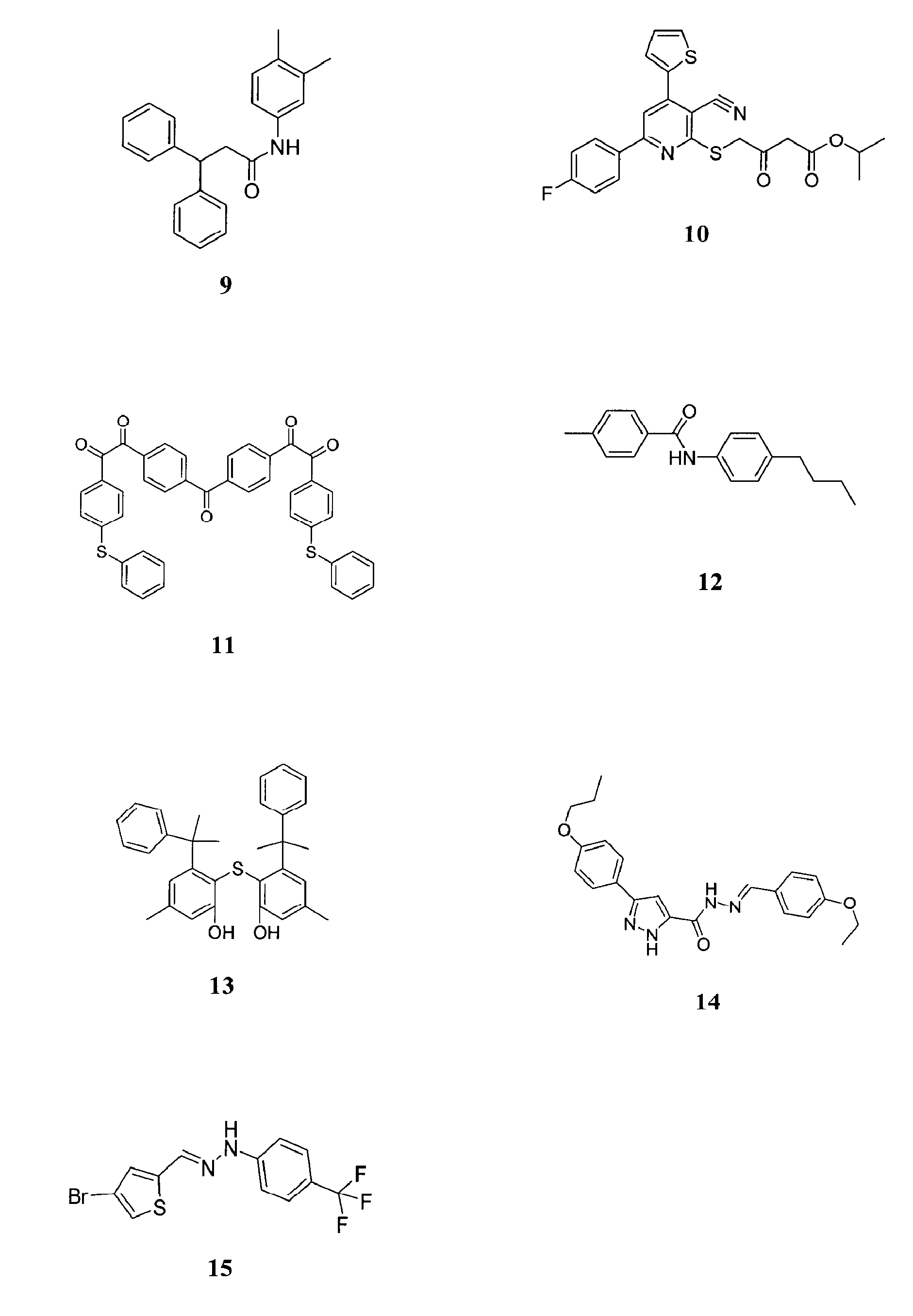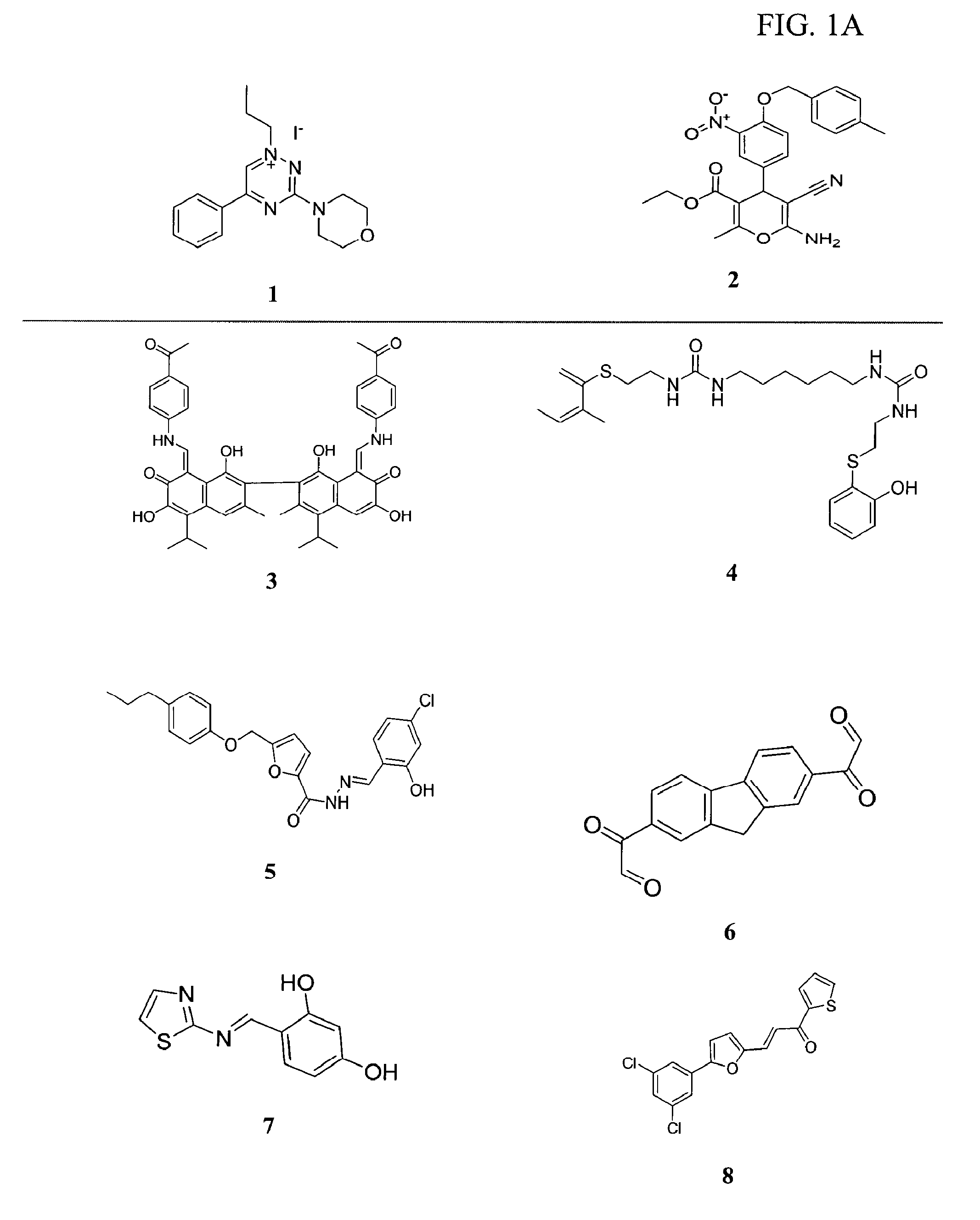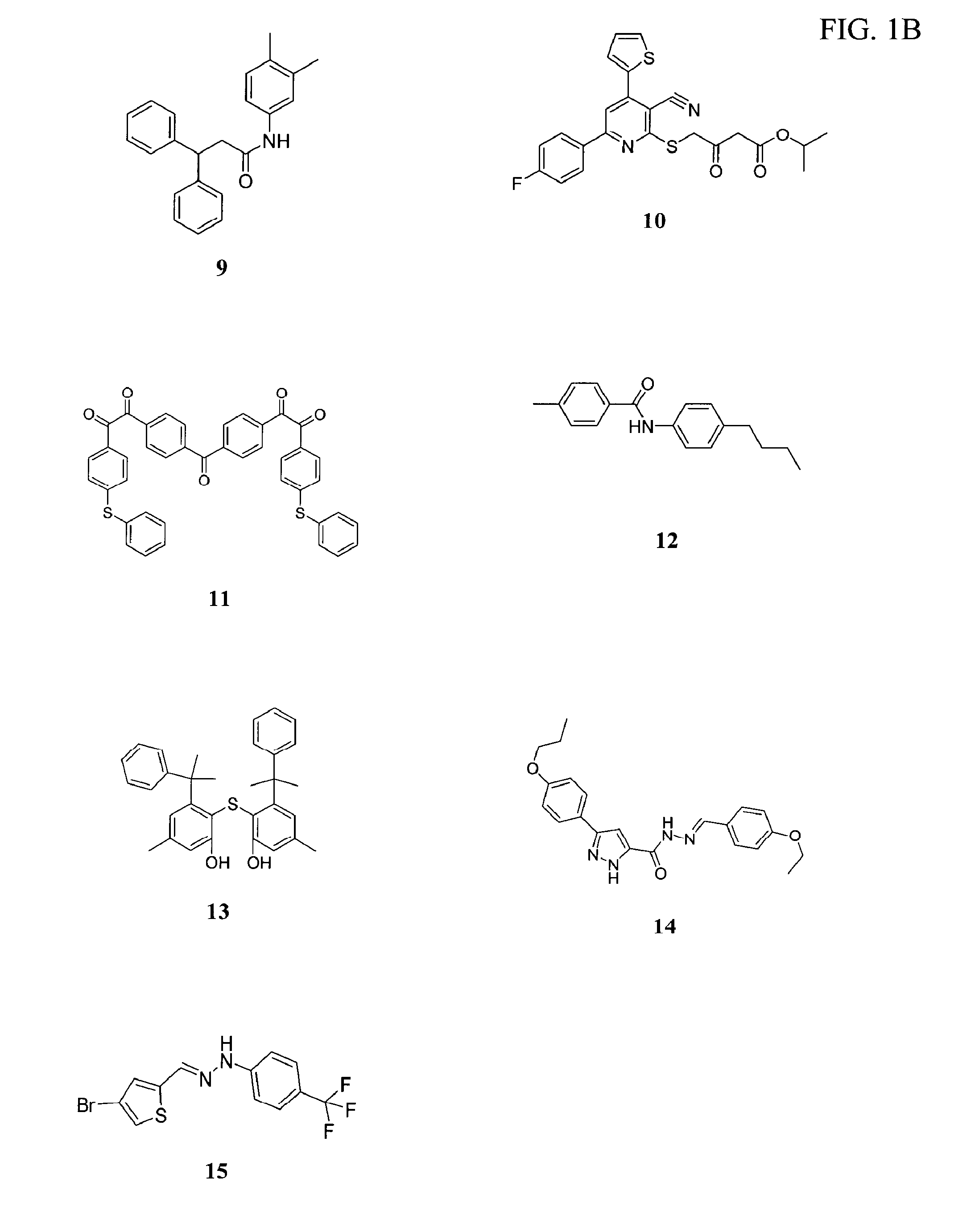Composition and method for inhibiting norovirus infection
a technology of composition and inhibition, which is applied in the direction of biocide, heterocyclic compound active ingredients, amide active ingredients, etc., can solve the problems of large outbreaks in crowded communities or institutions, noroviruses are difficult to study, and difficult to control, and achieve the effect of being particularly effectiv
- Summary
- Abstract
- Description
- Claims
- Application Information
AI Technical Summary
Benefits of technology
Problems solved by technology
Method used
Image
Examples
example 1
Compound Screening Against A Antigen
[0046]Since different Norovirus can share the same antigenic epitopes, such as the H epitope by both the A / B binding and the Lewis binding strains, VA387, a first well-characterized Norovirus strain, was selected for a primary screening of inhibitor compounds. VA387 has the broadest spectrum to human HBGAs that recognizes A, B and H epitopes of the human HBGAs. The A antigen was selected for the target for the VA387.
[0047]The Saliva-base blocking assay and protocol was used to screen The Diversity Screening Set compound library of about 5000 compounds. Fifteen (15) compounds, numbered 1 through 15 shown in FIGS. 1A and 1B, revealed strong inhibition with EC50 values less than 15 μM against VA387 binding to type A antigen, and showed dose responses at concentrations of about 0.1 to about 100 μM (estimated as 50 μg / ml for any one compound. The most potent inhibitor of binding by VA387 to A antigen was Compound 1, with an EC50 value of 2.2 μM. The ti...
example 2
Cytotoxicity of Screened Compounds
[0049]Two cell lines, the HeLa and Caco-2 cells, were used to evaluate the cytotoxicity of the 15 Compounds using the MTS assay. None of the 15 compounds had significant inhibitory effect on the growth of Caco-2 cells below 200 μM of compound concentration (data not shown). When HeLa cells were used, Compounds 1, 2, 3, 4, 6, 7, 8, 10, 11, 12, and 13 had weak cytotoxicity with CC50 values greater that 50 μM, and only Compounds 14 and 15 showed strong cytotoxicity with CC50 values around 10 μM. The data is shown in Table B, where CC50s stands for the concentrations of compounds to cause 50% cell death. Experiments were repeated three times, and the data in Table B show the average CC50 values.
example 3
Specificity of Inhibitory Activities to the VLP
[0050]In preliminary studies to develop the saliva blocking assay, significant blocking activities were observed when compounds and the VLPs were added to the plate at the same time. However, higher blocking activities were observed when the compounds were pre-incubated with the VLPs before addition to the plate. Furthermore, when compounds were added to saliva coated plates as a first step and removed before adding the VLPs, there was no inhibitory activity observed, which was repeatedly observed in testing different VLPs with over 70 active compounds (data not shown). These results suggested that the compounds play their inhibitory role via interaction with the VLPs, not with the HBGAs.
PUM
 Login to View More
Login to View More Abstract
Description
Claims
Application Information
 Login to View More
Login to View More - R&D
- Intellectual Property
- Life Sciences
- Materials
- Tech Scout
- Unparalleled Data Quality
- Higher Quality Content
- 60% Fewer Hallucinations
Browse by: Latest US Patents, China's latest patents, Technical Efficacy Thesaurus, Application Domain, Technology Topic, Popular Technical Reports.
© 2025 PatSnap. All rights reserved.Legal|Privacy policy|Modern Slavery Act Transparency Statement|Sitemap|About US| Contact US: help@patsnap.com



